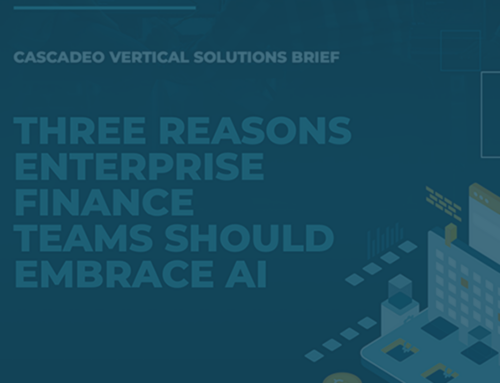
You need your IT staff to embark on a digital transformation; your IT staff needs to feel confident that their jobs are secure and their skills are valuable despite the dramatic changes that come with cloud computing. How do you bridge the gap?
Don’t Let Staff Resistance Become an Obstacle to Your Cloud Transformation
 For your business, digital transformation represents a wealth of opportunities to improve agility, market responsiveness, growth at scale, and customer experience. But for your current IT staff, it may appear to represent an existential threat. Cloud computing increases efficiencies and occasions for automation, both of which can come at the cost of human contribution; it also requires a different skillset than traditional, on-prem IT environments. You need your IT staff to embark on a successful cloud journey; your IT staff needs to feel confident that their jobs are secure and their skills are valuable. How do you bridge the gap?
For your business, digital transformation represents a wealth of opportunities to improve agility, market responsiveness, growth at scale, and customer experience. But for your current IT staff, it may appear to represent an existential threat. Cloud computing increases efficiencies and occasions for automation, both of which can come at the cost of human contribution; it also requires a different skillset than traditional, on-prem IT environments. You need your IT staff to embark on a successful cloud journey; your IT staff needs to feel confident that their jobs are secure and their skills are valuable. How do you bridge the gap?
Digital transformation inherently demands cultural change. In order to take full advantage of the cloud, enterprises must alter their processes to adapt to a vastly different IT operating environment, where storage, apps, and functions are structured and perform differently than in traditional on-prem architectures. The best transitions will likely include implementation of DevOps or DevSecOps processes, application modernization, and a general reconsideration of how computing is done, system-wide. Up to this point, a thoughtfully-executed change management practice can provide the necessary framework for a smooth transition.
Until we arrive at the cloud skills gap. In a 2022 S&P Global survey, only 39% of respondents reported that their IT staff was cloud-ready. Cloud implementation has simply accelerated too quickly for relevant skill development to keep up. As cloud engineers continue to innovate with generative AI integrations, the problem will likely grow. We’ve covered the cloud skills gap and how to address it. But getting your IT team on board with a cloud migration if they are among the 61% that aren’t prepared to take your business to the cloud can present a serious challenge, when they’re the people you rely on to keep your current environment running and to drive future changes.
Even when staff is fully qualified, cloud migration will change their day-to-day work substantially. In short, the shift from on-prem operations to cloud outsources a significant portion of IT work; your staff becomes part of a set of as-a-service systems, rather than being in charge of equipment, processes, and functions built and operated under their oversight. It’s easy to see how this can feel like a demotion in authority and responsibility.
You can address the skills gap via hiring and upskilling, you can augment your staff with professional services, and you can hand off daily cloud management with managed services. But before you can do any of that, you have to get your team ready and willing to come along for the cloud ride. That requires leadership, knowledge, clear communication, and precise strategy. That strategy must have detail, depth, and a clear rationale, lest you risk making the mistake of “believing that an executive mandate is a strategy,” one of 10 common cloud strategy mistakes identified by Gartner. It must start from a realistic assessment of both your current state of affairs and your business goals, and an understanding of how a cloud migration can help accomplish those goals.
Steps like discovery and assessment, and more minimal tools offered by cloud providers like the AWS Migration Evaluator can provide a starting point for an informed strategy, as can a preliminary conversation with cloud experts about your critical functions, your future needs, and how they can be improved in the cloud. Learning as much as possible about the sources of cloud-related worry, like security, data governance, and compliance, can help you prepare for a productive conversation with your IT team about any concerns or fears they may have about your system; likewise, a plan for their role in the transition, ideally complete with initiatives for recognizing and building their value through training and expert support, can help you bring everyone along for a smooth ride to the cloud.




